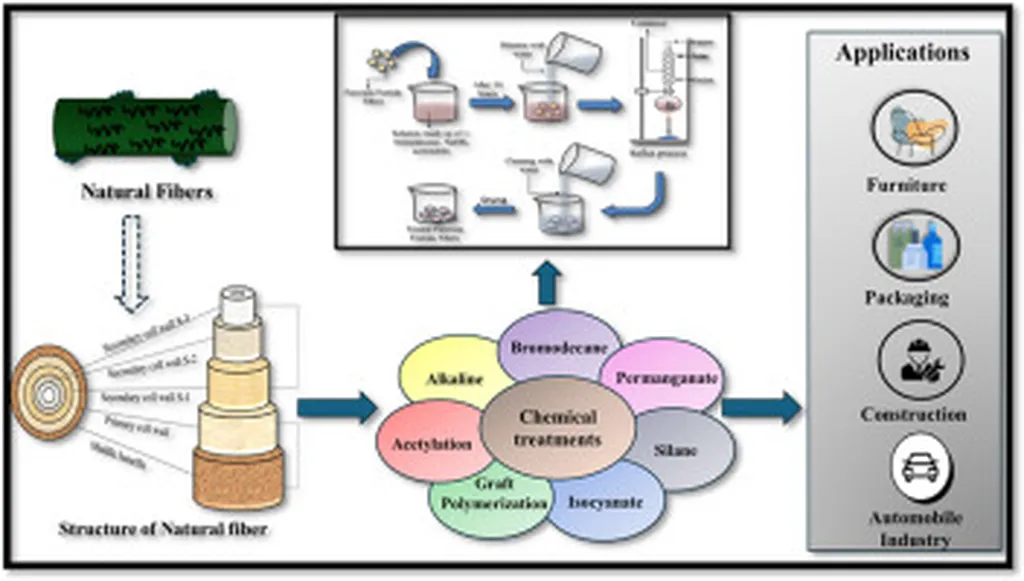In a significant stride towards enhancing the reliability and design of natural fiber composites, a team of researchers led by Ameny Ketata from ESTACA in France, in collaboration with the Acoustics Laboratory of Le Mans University and the Laboratory of Mechanics Modeling and Production in Tunisia, has validated an innovative inverse identification method for flax/Elium® laminates. This research, published in the open-access journal ‘Composites Part C: Open Access’ (translated as ‘Composites Part C: Open Science’), extends the application of the method to more complex cross-ply configurations, offering promising implications for the energy sector and beyond.
The study builds upon a previously developed inverse identification method, initially applied to unidirectional (UD) flax/Elium® laminates. By extending this method to cross-ply laminates, the researchers aimed to confirm its robustness and identify the dominant mechanical parameters influencing the vibration behavior of biocomposites. “Our goal was to understand how different material and geometrical parameters affect the dynamic response of these composites, especially as we move from simple to more complex configurations,” explains Ketata.
The research team conducted a comprehensive sensitivity analysis, assessing the influence of various parameters on the first seven vibration modes. While the longitudinal modulus (E1) and in-plane shear modulus (G12) were found to predominantly govern the dynamic response in UD laminates, cross-ply configurations revealed additional influences from the transverse modulus (E2) and interlaminar shear modulus (G13). “We observed enhanced coupling effects involving G12, which highlights the complexity of the dynamic behavior in cross-ply laminates,” notes Ketata.
One of the key findings of the study is the progressive transition in dominant mechanical parameters across vibration modes. Lower modes (f1, f2) are primarily controlled by E1, while higher modes become increasingly sensitive to G12, G13, and, to a lesser extent, E2. This understanding is crucial for optimizing the design of natural fiber composites for specific applications.
The study also considered structural variability, reflecting the heterogeneous nature of bio-based materials. Parameters such as thickness and density were found to play a significant role in the dynamic response. Interestingly, the researchers highlighted a compensation mechanism: increased thickness raises stiffness but also adds mass, partially offsetting frequency gains. “This compensation effect is an important consideration in the design and optimization of composite structures,” says Ketata.
The proposed inverse method demonstrated excellent agreement between simulated and experimental modal responses for both 4-ply and 8-ply laminates. The genetic algorithm used in the study converged toward realistic values for thickness (between 3.03 mm and 3.17 mm) and density (around 1292 kg/m³), confirming the robustness of the approach.
The implications of this research are far-reaching, particularly for the energy sector. Natural fiber composites are increasingly being considered for use in wind turbine blades, offshore structures, and other energy-related applications due to their sustainability and mechanical properties. The ability to accurately model and predict the dynamic behavior of these composites is crucial for their successful implementation.
As the world continues to seek sustainable and efficient energy solutions, the insights gained from this study could pave the way for more reliable and optimized designs of natural fiber composites. By accounting for both material variability and process-induced dispersion, the method contributes to more accurate modeling and informed decision-making in the design and application of these advanced materials.
In the words of Ketata, “This research not only validates our inverse identification method but also provides valuable insights into the dynamic behavior of natural fiber composites. We hope that these findings will inspire further advancements in the field and contribute to the development of more sustainable and efficient energy solutions.”

